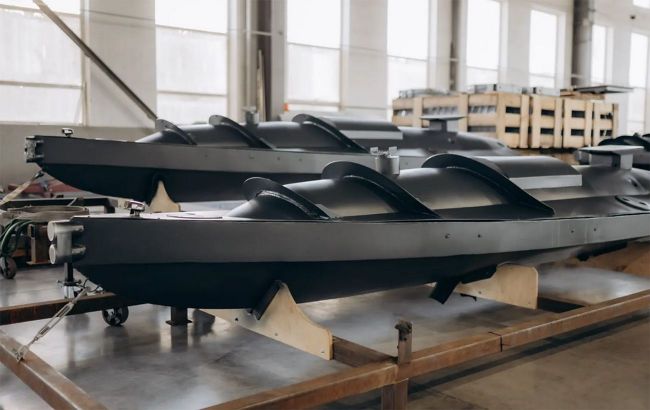SaparotRob
Unter Gemeine Geschwader Murmeltier XIII
So we're undetectable if we use Fahrenheit?
Follow along with the video below to see how to install our site as a web app on your home screen.
Note: This feature may not be available in some browsers.
Ad: This forum contains affiliate links to products on Amazon and eBay. More information in Terms and rules
An example to put this into something the average person can get their head around. When you walk barefoot down a carpet, your feet contact the carpet for a second or two each step, transferring your body heat to the carpet, changing the carpet temps where you make contact by some very small amount. This temperature change is a small fraction of a degree C, sometimes only a few millidegrees, or a few 10's of millidegrees. Now that may not mean much to you, unless you already have a concept of what is happening.
A picture helps get the concept across. In the following image my youngest daughter walked on the carpet at a normal walking pace about 30 seconds before this image was captured. Her footprints, visible in this image, are the resultant temperature change to the carpet from the momentary contact of each step. The sensor used was a FLIR Indigo Systems, Merlin Mid IR (3-5 u), cryogenically cooled InGaAs.
View attachment 742128
Another example, same imager. In this image I reached out and put my thumb on the barrel of this camera lens and counted to 2, so roughly a 2 second contact with my skin. The bright spot in the image is the temperature change caused by that contact.
View attachment 742129
Think about how little, minute, the temperature change was in each of those events, and yet it is still clearly visible.
T!
This is why after I enter my bank card pin I then touch all the keys.An example to put this into something the average person can get their head around. When you walk barefoot down a carpet, your feet contact the carpet for a second or two each step, transferring your body heat to the carpet, changing the carpet temps where you make contact by some very small amount. This temperature change is a small fraction of a degree C, sometimes only a few millidegrees, or a few 10's of millidegrees. Now that may not mean much to you, unless you already have a concept of what is happening.
A picture helps get the concept across. In the following image my youngest daughter walked on the carpet at a normal walking pace about 30 seconds before this image was captured. Her footprints, visible in this image, are the resultant temperature change to the carpet from the momentary contact of each step. The sensor used was a FLIR Indigo Systems, Merlin Mid IR (3-5 u), cryogenically cooled InGaAs.
View attachment 742128
Another example, same imager. In this image I reached out and put my thumb on the barrel of this camera lens and counted to 2, so roughly a 2 second contact with my skin. The bright spot in the image is the temperature change caused by that contact.
View attachment 742129
Think about how little, minute, the temperature change was in each of those events, and yet it is still clearly visible.
T!
Why? My pin nr consist of 4 numbers so 10000 combinations are posible. Well save is less combis 6561. It will take a patient robber.This is why after I enter my bank card pin I then touch all the keys.
This is why.Why?

That's assuming it's a raw-water cooled engine, such as what powers my boat. However, why sacrifice an expensive engine on a kamikaze drone when an electric drive with weight efficient LFP batteries would suffice? There would be no heat signature or at least more modest.I'm just thinking that even if you dissipate heat with water, that water itself will be warmed and show a trail. I don't know, I'm no expert, but I do know that heat doesn't die, it only spreads until it assumes background -- but a vehicle going 30-40 kts is probably going to leave a trail of warmed water, even if the washing is 100% effective in hiding the engine itself, which it won't be.
A high-end IR imager can detect the fading heat on each key.Why? My pin nr consist of 4 numbers so 10000 combinations are posible. Well save is less combis 6561. It will take a patient robber.
Come on guys. Not every punk ass thief can afford a high end ir. They are people on drugs, rats and so on. They steal because work is not for them and mostly lack something called a brain.A high-end IR imager can detect the fading heat on each key.
The coolest signature is the first key you touched, the brightest is the last you touched. Then compare the brightest of the remaining two and you have the third key you touched, the second key you touched is obvious.
And these brainless druggies manage to install high-tech card skimmers at bank ATMs, gas (petrol) pumps, store Point of Sale machines and fast-food kiosks.Come on guys. Not every punk ass thief can afford a high end ir. They are people on drugs, rats and so on. They steal because work is not for them and mostly lack something called a brain.
Use a pen
I can't remember the last time I had to enter my pin number.A high-end IR imager can detect the fading heat on each key.
The coolest signature is the first key you touched, the brightest is the last you touched. Then compare the brightest of the remaining two and you have the third key you touched, the second key you touched is obvious.
What are we looking at? Are the new narrower banks high and dry to facilitate afv movement?in a case if you have missed situation development at the banks of Dnipro...
View attachment 742215
View attachment 742216
I have been searching for more information about this drone and cannot verify its propulsion system. The footage at the 1:35 second mark in the clip shows the drone at speed and it seems to be very quiet. I'm on the fence. It might be gas. It might not be. However, given it's weight, speed and size, the fact that the means of propulsion is inboard, that there is no evidence of raw water exhaust from the stern leads me to believe this drone has electric propulsion.That's assuming it's a raw-water cooled engine, such as what powers my boat. However, why sacrifice an expensive engine on a kamikaze drone when an electric drive with weight efficient LFP batteries would suffice? There would be no heat signature or at least more modest.
Jim

south of Kherson - ZSU forces crossed Dnipro they are already more than 6 km deep behind russian defense linesWhat are we looking at? Are the new narrower banks high and dry to facilitate afv movement?
I was very disappointed but I admit not surprised, to see that the ATACMS missile supplied to Ukraine are the early M31 or Block 1 missiles which only have a range of 165km and have only been supplied with cluster warheads.
Source The Telegraph
Yesterday, the freedom-loving world was greatly cheered to hear that US President Joe Biden had finally overcome his fears and supplied the embattled Ukrainians with the war-winning weapon they have been requesting pretty much since the invasion began: the Army Tactical Missile System, ATACMS. And it's true, some ATACMS have been supplied. Sadly, however, they are a long-obsolete early version with barely half the range of a proper ATACMS and a comparatively feeble warhead.
To be precise, the version supplied is the M39 or Block I, which has a range of only 165km, as opposed to 300km for any other ATACMS variant. This range has been confirmed by the Pentagon to US media, so we can be sure which weapon we are talking about. This is actually considerably less than the range of Storm Shadow (aka SCALP) cruise missiles already supplied by the UK and France. Worse, the M39's warhead is a cluster munition, meaning that it scatters large numbers of small bomblets rather than making one big bang. Cluster bomblets can be highly effective against suitable targets, for instance troops or vehicles or parked aircraft in the open, but they aren't good for destroying major structures or bunkers
The short range of the M39 would account for the fact that the only Russian aircraft so far reported destroyed are attack helicopters, which need to be based nearer the front line than jets – in Berdyansk, in this case. The M39 cannot reach Saky, the main Russian airbase in Crimea, and it cannot reach the naval base of Sevastopol, already rendered largely untenable by Storm Shadow / SCALP strikes. Perhaps most significantly, the M39 ATACMS cannot reach the Kerch bridges and so cut one of Russia's vital supply lines. In fact, the M39 ATACMS cannot do pretty much anything the Ukrainians wanted ATACMS for. It can strike anywhere in the occupied "land bridge" from Crimea to Russia, but Ukraine could already do that.